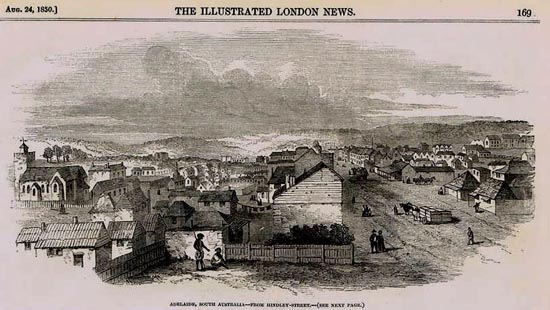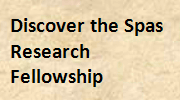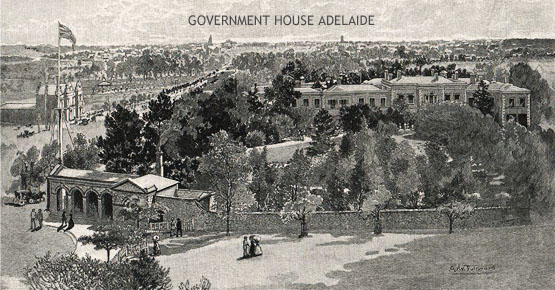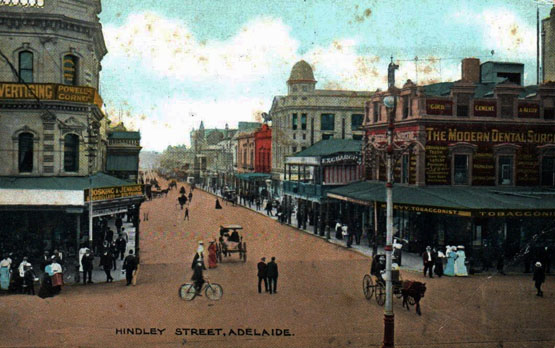 |
|||
|
|
|||
|
||||||||||||||||||||||||||||
|
P R O F I L E |
||||||||||||||||||||||||||||
|
  Historic Adelaide
Historic AdelaideNorth Gumeracha and Adelaide South Australia In 1855 John Souter Osborn and his wife emigrated to South Australia from the English South Coast. This web page details what they would have found around this time, both in North Gumeracha SA where they ran the ill fated Robert Burns Inn and then Adelaide where they spent the rest of their lives after 1856. 
Adelaide, 24 August 1850 We have been favoured by a correspondent with the accompanying view of the capital of South Australia, sketched from the west end of Hindley St. in November last. It is somewhat unfortunate that all the principal buildings of the city are in the background; but altogether this is the best point the artist could select. The view has been lithographed and published in Adelaide. The land originally surveyed for the intended city amounted to a thousand acres of which 700 acres are on the south side of the River Torrens, and 300 acres on the north. The streets are laid out at right angles to each other, and being one to two chains in width, are broad enough for all purposes. In the town, six public squares have been laid out and twenty two principal streets thus allowing plenty of room for increase at a future day, and making the present city healthy and pleasant. Wilkinson describes park lands in the environs, which have been preserved for the recreation of the inhabitants. This park land is a pleasant scene, and has much the appearance of the English parks, being adorned with large native trees in clumps, and having the river passing though the grounds for some distance, with trees upon its banks. These trees are the favourite resort of numberless parrots, which keep up a constant chattering amongst the branches, their gay plumage sparkling in the sun. The banks of the river, only a few years since, were a favourite resort for the emus, kangaroos and other animals, before the white man scared them away; now they are not seen here unless perchance, it be some stray specimens hunted by dogs and passed its wits, seeking shelter among the abodes of its destroyers.
Another important point is North-terrace which contains the Australian Company's offices, the bank of South Australia, and further on, Trinity Church. On the same side as the Government House is the Legislative Council House and other substantial edifices. King William-street has on one side comfortable houses, and on the other stock yards, and other premises belonging to the Auction Mart, at the corner of King William and Hindley streets, and which Mr Wilkinson considers to be a handsome building, fit to ornament any English town. Further up King William-street are Younghusband's and Monteflore's and Stock's stores and in the distance the Government offices and Commissariat stores, many good private houses, and shops. The point of our view is thus described:-
Hindley-street is the principal place of business, and here is to be observed
all the bustle of a flourishing town, the way being filled with heavy drays
loaded with produce, drawn by 4, 6, or 8 bullocks, and accompanied by the
drivers shouting and cracking their long whips; also with wagons and carts,
drawn by strong English-looking horses, and mingled with gigs, carriages, and
horsemen, all seemingly eager in business or pleasure, and taking little notice
ADDITIONAL INFORMATION 
 DESTINY CATEGORY 19th CENTURY second half, 20th CENTURY first half, Historical summary, PLACES LANDSCAPE City Centre REGION Located outside the United Kingdom |
||||||||||||||||||||||||||||






 of the half-naked black men, armed with spears waddy, accompanied by their
fadies (or women) and children, and followed by gaunt, lean kangaroo dogs.
Hindley-street is lined on both sides with good stone, brick, or wooden houses,
some few of which are of a superior build, and do credit to Australian street
architecture. Many of the stores or merchant's warehouses are massive brick or
stone buildings; and altogether, the town has a much more imposing aspect than
could be expected from the difficulties it has encountered and the short time it
has been established. There are two churches, Trinity and St John's and two or
three very commodious chapels belonging to different sects.
of the half-naked black men, armed with spears waddy, accompanied by their
fadies (or women) and children, and followed by gaunt, lean kangaroo dogs.
Hindley-street is lined on both sides with good stone, brick, or wooden houses,
some few of which are of a superior build, and do credit to Australian street
architecture. Many of the stores or merchant's warehouses are massive brick or
stone buildings; and altogether, the town has a much more imposing aspect than
could be expected from the difficulties it has encountered and the short time it
has been established. There are two churches, Trinity and St John's and two or
three very commodious chapels belonging to different sects.